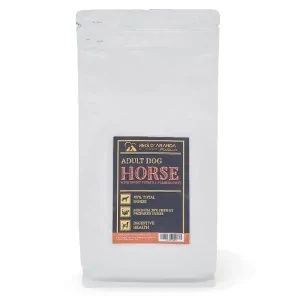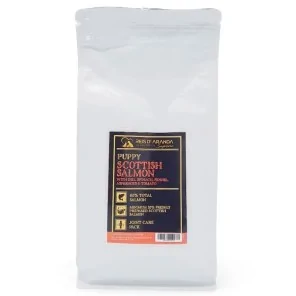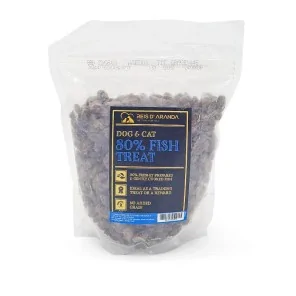Its name says it all: the Vienna blue rabbit comes from Austria. Not only is it beautiful with its shiny blue-grey...
THE LÖWCHEN
INTRODUCTION
Löwchen is a companion dog whose name in German means ‘little lion’, which is why the breed is often affectionately known as the Little Lion Dog.
The Löwchen has been a popular pet among Europeans for over 500 years, although its exact origin is not known.
It is a breed known for its small build, mane-like coat and playful attitude, characteristics that make it an ideal companion for any family.
It is one of the rarest dogs in the world, usually having less than a few hundred new registrations each year worldwide.
THE ORIGIN OF THE LITTLE LION DOG
The origins of the Löwchen have long been the subject of debate, and historians cannot agree on the birthplace of the breed. The name is German, but since the Middle Ages the Löwchen was popular with noblewomen in France, Italy, Holland, Spain and Russia, as well as in Germany.
There are many theories about its origin suggesting that the Löwchen may have originated in Northern Europe, the Mediterranean, Russia or even Tibet.
Wherever the breed originated, we know that its main purpose was as a companion dog. It may also have been used as a rodent hunter and possibly as a small alarm dog.
Löwchen are descended from the same ancient line that produced companion breeds such as the Bichon Friesian and the Maltese and, thanks to sightings in Renaissance art in several countries, we know that the appearance of the Löwchen has not changed for at least 500 years.
Paintings and woodcuts give evidence that Löwchen have existed since the 15th century. The oldest evidence of the breed found comes from a painting by Jan van Eyck, ‘The Birth of the Baptist’, dating from 1422. Another clue is found in the expressive woodcuts of the German artist Albrecht Durer, which give experts a glimpse into the breed's past.
Products of the Renaissance, a period when symbolism abounded, lion dogs represented courage. Legend has it that knights who died in battle were buried with a lion statue at their feet, but if they died of natural causes, a lion dog statue was substituted.
Given their depiction in a variety of works of art, it is clear that they were a popular choice among select figures of nobility and royalty. It has even been argued that their famous haircut was due to their warm fur acting as a hot water bottle to warm the cold feet of wealthy ladies.
The first formal breeder of the Löwchen is recorded as an individual named Dr. Walthier in early 19th century Germany.
Over the years, however, the Löwchen's popularity waned: by World War II, the breed was considered rare. A Belgian woman, Madame Bennert, owner of Löwchen since 1897, set out to prevent the breed from disappearing.
Bennert's efforts were successful and for many years she worked closely with German breeders to increase the number of Löwchen and maintain their quality. English breeders began importing dogs in 1968; they first came to the United States in 1971 thanks to these breeders in England.
Curious and intelligent, but sometimes stubborn, the Löwchen is playful, quick and enjoys the outdoors. He is a quick learner and has done well in obedience. Although still rare today, Lowchen has an assured future.
Despite its small size, the Löwchen acts like a big dog and lives up to its name, backing away from nothing.
WHAT IS THE LITTLE LION DOG LIKE?
GENERAL APPEARANCE: He is an intelligent and enthusiastic little dog, with a lively and alert expression. Robust, with good bone structure, short and well proportioned body, tall head, and a long silhouette. His gait is haughty and determined, accentuated by the floating mane of the lion grooming; the unshaven parts must be completely natural, in no case should they be sculpted. The lion grooming must be compulsory for the show.
IMPORTANT PROPORTIONS: The Small Lion Dog is square in shape. The length of the body (scapulo-ischial) is equal to the height at the withers. The length of the muzzle is visibly 2/3 of the length of the skull.
BEHAVIOUR / TEMPERAMENT: Very affectionate and obedient to his masters, attentive and responsive. He is at ease in all circumstances and knows how to remain calm and discreet when called upon. His frank and tender look seeks to understand what is expected of him.
HEAD : Relatively short and rather broad from the top of the skull to the muzzle. The head is carried high.
CRANIAL REGION:
SKULL: Rather flat, of equal length and breadth.
NASO-FRONTAL DEPRESSION (STOP): Moderately arched.
FACIAL REGION:
TRUFFLE: Black in colour (total pigmentation compulsory), except for brown coats and their derivatives: in this case the truffle is dark brown (total pigmentation compulsory). The nose is located in the extension of the muzzle.
HOCOCO: Rather broad, straight.
LIPS : Close fitting and black, except in brown coats and their derivatives: in this case the lips are dark brown.
TEETH : Teeth strong and complete, with a scissor bite. The absence of PM1 is acceptable.
EYES: Set well forward. Large, very dark, round, set wide apart, the gaze should be directed towards the front. The eyelids are fully pigmented.
EAR : Set on low set (at eye level). They are medium long; if stretched they can reach about half the length of the muzzle. They are pendant and have abundant fringe. The fringes may reach at least to the end of the nose.
NECK: Of good length. Slightly arched and blending harmoniously with the shoulders and withers.
BODY :
UPPER LINE: Straight.
LOIN : Short, broad and muscular.
CHEST : Well developed, reaching down to the elbows.
BELLY : Well sprung.
TAIL : Set on very slightly below the line of the back. It is carried gracefully curved over the back, but without touching it, only the plume touches it, both when the dog is lying down and when it is moving.
LIMBS FOREQUARTERS:
GENERAL APPEARANCE: Well plumb.
SHOULDERS: Well laid back, well sprung, shoulder blades well muscled.
ELBOWS : Close fitting to the body.
PASTERNS : Seen from the front, short and straight. Seen from the side, very slightly bent.
HANDS / FOREQUARTERS FEET: Small and round. The toes are close together and well arched.
HIND LEGS:
GENERAL APPEARANCE: Well plumb.
HINDQUARTERS : Well muscled. The length of the tibia is equal to that of the femur. The point of the buttock is slightly protruding.
HOCK: Quite strong. The point is approximately ¼ of the height at the withers. Angulation is normal.
HINDQUARTERS : Strong, well set square to the ground.
HIND FEET: Small and round, toes close together and arched.
GAIT / MOVEMENT : Agile, energetic and broad. The limbs are well parallel when the dog is in action. The carriage of the head is haughty.
COAT:
COAT: Fairly silky, long, wavy, dense, no undercoat present.
COLOUR: All colours or combination of colours are acceptable.
SIZE AND WEIGHT:
SIZE: 26 to 32 cm at withers, with a tolerance of 1 cm more or less.
WEIGHT: About 6 kg.
FAULTS: Any departure from the foregoing points should be considered a fault and the seriousness with which the fault should be regarded should be in exact proportion to its degree and its effect upon the health and welfare of the dog.
DISQUALIFYING FAULTS:
- Aggressiveness or extreme shyness.
- Any dog showing clear signs of physical or behavioural abnormalities.
- Total or partial depigmentation of nose, lips and eyelids or any colour other than black, or any colour other than dark brown in brown coats and their derivatives.
- Turned up nose.
- Absence of one or more incisors or a canine.
- Non-consecutive absence of two teeth (PM2, PM3, PM4 lower).
- Consecutive absence of two teeth (PM2, PM3, PM4 lower).
- Absence of a carnivore (PM4 upper, M1 lower) or any other molar except an M3.
- Overshot or undershot mouth.
- Eyes small, almond-shaped, globular, too light or of a different colour.
- Entropion, ectropion.
- Tail curled into a ring.
- Coat curly, too short, lack of wave.
- Severe anatomical deformation.
N.B.: Male dogs should have two apparently normal testicles fully descended into the scrotum.
Only functionally and clinically healthy dogs with typical breed conformation should be used for breeding.
TEMPERAMENT: He is a happy, playful and affectionate dog, as one would expect from a companion breed, although he can sometimes be protective of his loved ones, so it is important to start socialising him at an early age. He is attentive to what is going on around him and has a tendency to bark, so it is necessary to train him not to bark at the slightest noise.
THE SMALL LION DOG: A BREED IN DANGER OF EXTINCTION
Alexia Rodriguez , breeder and director of the Lowchen Club of America, talks about these small lion dogs that do not lose hair, are healthy, active and are a ‘best kept secret’. With representations dating back to 15th century Germany, only 80 Lowchen dogs a year are registered in the US.
Rodriguez said that in 2015, only 18 Lowchen litters were born in the United States, with an average litter size of just three puppies. If it continues on its current trajectory, the club estimates the Lowchen could be extinct by 2044.
‘Our numbers indicate that only 37 percent of dogs in the United States contribute to the gene pool,’ Rodriguez said. He added that the strict line breeding needed to re-establish the breed after World War II is suspected to be the cause of the low litter numbers. Nevertheless, they breed and give birth naturally.
THE HEALTH OF THE SMALL LION DOG
The Löwchen has the advantage of being a little known and widespread breed, so that the hereditary diseases that it can transmit are few and easily controlled, since mass breeding does not worsen its situation as it happens in other cases.
- CATARACTS: Cataracts in dogs are a loss of transparency of the lens that helps them to see better, that is to say, it is the loss of the crystalline lens. Due to the breakage of the crystalline tissue, opacity is produced in the eyes and causes blurred vision. It is essential to treat them as soon as possible because the more time passes, the more dense they become and the more likely it is that the canines will have a total loss of vision without the ability to recover it. There are several causes of cataract disease in dogs. One of them may be by nature or by the dog's old age, as we have already mentioned above, due to the rupture of the crystalline lens. But there are also other causes of cataracts in dogs, such as trauma, injury, inflammation of the eye or diabetes. However, the most common cause, or the one most commonly diagnosed, is hereditary cataracts. Age is not a determining factor in this cause as they can appear when the animal is young.
- PATELLAR LUXATION: Patellar luxation is one of the most common orthopaedic diseases in dogs and is diagnosed in 7% of puppies. The disease mainly affects small dogs, especially breeds such as boston and yorkshire terriers, chihuahuas, pomeranians and miniature poodles. The incidence in larger breeds has been increasing over the last ten years and breeds such as Chinese shar pei, smooth retriever, akita and Pyrenean mountain dog are now considered to be predisposed to the disease. Patellar luxation affects both knees in half of the cases, potentially leading to discomfort and loss of function. Patellar dislocation is occasionally caused by traumatic injury to the knee, resulting in sudden, severe limb lameness.
- HIP DYSPLASIA: Hip dysplasia is a multigenic, osteoarticular disease that can be hereditary and degenerative. Therefore, there may be different factors with which to try to predict whether the disease can be developed or not. It is necessary to take into account that, although it can be a hereditary disease, it does not always have to develop as it is possible that the dog does not transmit it to its descendants (some causes are slippery floors and obesity or overweight during growth).
- PROGRESSIVE RETINA ATROPHIA: There are two types of photoreceptor neurons in the retina: rods (located more in the periphery of the retina) and cones (located closer to the centre). These photoreceptors gradually deteriorate so that the retina is no longer able to capture light and, as it is unable to send information to the brain, the animal gradually stops seeing. On many occasions, it is difficult to detect and the owner does not realise until the disease is very advanced. It is a hereditary disease that affects both eyes equally, some breeds are more predisposed than others, but it can affect any breed and animal.
In terms of grooming the lowchen has a single coat of long, wavy, silky hair which should be brushed two or three times a week using a long barbed butter brush and a dry moisturising spray. The coat is clipped with the shortest possible blade from the last rib and over the hindquarters, leaving a tuft on the last third of the tail and also on the feet (from the top of the wrist). Baths should be weekly or fortnightly, using only quality products with good moisturising properties (shampoo and mask).
As far as food is concerned, it is best to opt for a medium or large grain feed to avoid tartar, with Reis d'Aranda's salmon feed being a great option for puppies and in adulthood the horse meat or Angus beef feed of the same brand, which will help to avoid heart problems and overweight.
CONCLUSION
The Löwchen (Small Lion Dog) is a curious and rare breed that could disappear in the next decades due to the low number of breeders and enthusiasts, which would be a pity considering the magnificent character of the Löwchen and its sweet and cheerful appearance. A breed suitable for all families who want a pleasant and easy-care companion, ideal for companionship or sports such as dog dancing and agility.
Leave a comment
Log in to post comments
















